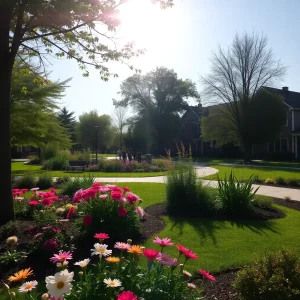UAB’s Proton Therapy Center: A Year Later
It’s hard to believe that it’s already been over a year since the University of Alabama at Birmingham’s (UAB) Proton Therapy center treated its last patient. This significant facility, which was regarded as a beacon of hope for many cancer patients, closed its doors for good on December 5, 2023. Let’s take a stroll down memory lane and revisit what this center meant to many, and where it currently stands.
A Milestone in Cancer Treatment
Before bidding farewell, the Proton Therapy center had reached an impressive milestone by treating its 500th patient earlier that same year. This facility, which cost a whopping $50 million to build, housed an enormous cyclotron worth $25 million. This piece of machinery was so substantial that it had to be installed using a crane! The cyclotron played a vital role in employing advanced technology that directed proton beams precisely at tumor sites, making it a promising option for patients battling cancer.
The Silence After Closure
Fast forward to today, and both UAB and Proton International, the partner of the university that managed the center, have kept a close hold on information about the facility since it closed. Inquiries made about the center’s future and its impact on cancer treatment have gone largely unanswered. It leaves many wondering: Is UAB working on any potential deals with Proton International? What happens to the cyclotron now? And the biggest question of all—how has the closure affected cancer patients over the last year?
Unanswered Questions
When reaching out to UAB, the university issued a vague response regarding the future of the facility. This uncertainty makes it challenging for the community to gauge their options for proton therapy, particularly since there are currently 46 proton therapy centers operating in the United States, and six more are in development. As the national association for proton therapy keeps track of these facilities, it raises a burning question: When will we see another proton therapy option open in Birmingham?
The absence of clear communication has prompted questions about what happens to the pricey cyclotron. Is it just sitting there collecting dust? Or are there plans to remove it? Moreover, how has UAB modified cancer treatment protocols following the loss of such a groundbreaking tool?
The Economic Perspective
Considering the hefty investment of $50 million into the Proton Therapy center, many are left to ponder if it was a wise choice. Did its closure signify a bad investment? Was the expectation of providing cutting-edge treatment not met? Without answers from both UAB and Proton International, it’s difficult to assess the financial implications this has on the university and its broader mission of research and treatment.
Looking Ahead
For patients and their families who benefited from the proton therapy treatment options at UAB, the closure marked a significant loss. Without clear communication from UAB and Proton International, it remains to be seen what is next for proton therapy options in the area or if they will be left waiting. As people affected by cancer know all too well, time is of the essence, and they often seek any available means to receive prompt care.
In summary, we commemorate the contributions UAB made in the realm of proton therapy, while simultaneously looking forward to what lies ahead in cancer treatment. With more proton therapy facilities expected to appear across the United States, our hope is that Birmingham will soon see the return of cutting-edge cancer treatment options that many within the community still so desperately need.


























